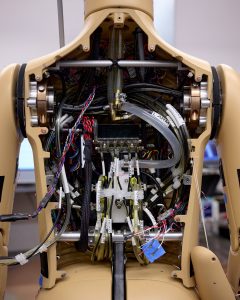Defensa Costera: Países Harness ‘Sand Motors’ a la Erosión de Batalla
3 min read
Countries Are Building Giant ‘Sand Motors’ to Protect Their Coasts From Erosion
Coastal erosion has become a significant concern for countries around the world. Rising sea levels, storm surges, and natural erosion processes pose a threat to coastal communities, infrastructure, and ecosystems. To combat this challenge, many countries have turned to an innovative solution known as the ‘sand motor’.
What is a ‘sand motor’?
A ‘sand motor’, also known as a beach nourishment or sand replenishment, is a large-scale coastal protection project that involves depositing vast amounts of sand along the shoreline. Unlike traditional measures such as seawalls or groynes, which only provide localized protection, sand motors aim to create and sustain natural beach ecosystems while providing erosion control over a larger area.
How does it work?
The process begins with dredging sand from offshore locations or nearby seabeds. This sand is then transported and deposited strategically along the coastline, often in the form of a long peninsula or ‘hook’. Over time, natural tidal and wave currents gradually redistribute the sand, creating a dynamic and self-maintaining system.
The sand motor acts as a buffer zone, absorbing wave energy and preventing further erosion of the coast. By allowing natural processes to shape and reshape the coastline, sand motors offer a more sustainable and adaptable solution in the face of climate change and rising sea levels.
Benefits of sand motors
Sand motors have gained popularity due to their numerous benefits:
- Erosion control: Sand motors provide a reliable and cost-effective method for protecting coastlines from erosion.
- Natural habitat creation: The addition of sand helps restore and create habitats for various coastal species, supporting biodiversity.
- Tourism and recreation: The expanded and maintained beaches resulting from sand motors attract tourists and offer recreational opportunities, contributing to local economies.
- Aesthetic appeal: Well-maintained sandy beaches enhance the visual appeal of coastal areas, making them more enjoyable for residents and visitors.
- Climate change adaptation: Sand motors are designed to adapt to changing sea levels and climate conditions, making them a forward-thinking approach.
Notable examples
Several countries have successfully implemented sand motor projects:
- The Netherlands: The Sand Motor project, initiated in 2011, created a hook-shaped peninsula along the Dutch coast. It covers an area of 128 hectares and is expected to provide protection for at least 20 years.
- Denmark: The Danish Sand Motor, located near the town of Lønstrup, is a 7-kilometer-long peninsula designed to protect the coastline from erosion and storm damage. It is the largest sand motor in Denmark and serves as a nature reserve.
- United Kingdom: The Bacton to Walcott Sandscaping project, planned for the Norfolk coast, aims to create a sand motor covering approximately 7 kilometers. It is expected to reduce the rate of erosion and provide long-term protection for coastal communities.
In conclusion, as coastal erosion becomes an increasingly pressing issue, countries are turning to innovative solutions such as sand motors to protect their coastlines. These projects offer a sustainable and adaptable approach to erosion control, while also providing benefits to the environment, tourism, and local economies. By harnessing the power of nature, sand motors pave the way for a more resilient coastal future.





